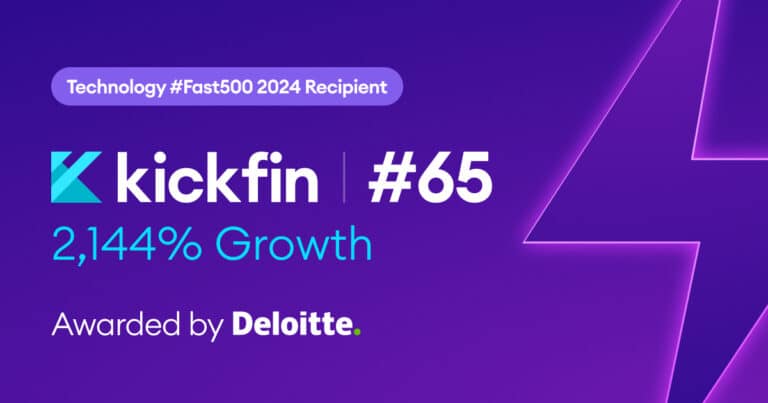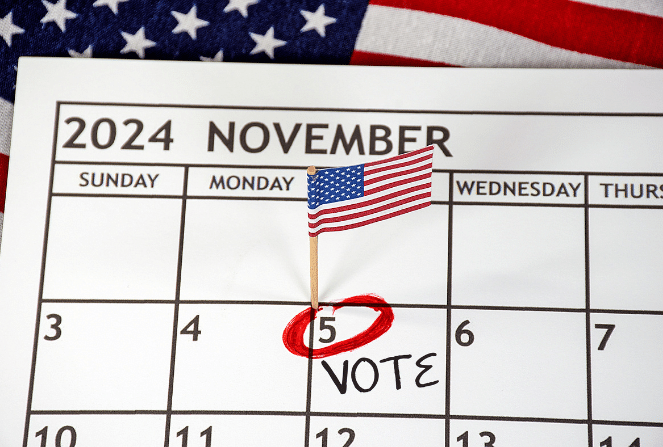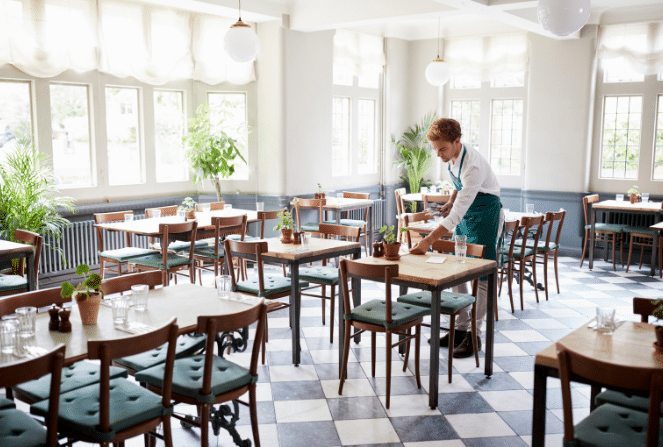A restaurant’s profit margin is its profits as a percentage of gross sales. Healthy profit margins are critical to the success of any food service business and can be influenced by several factors. In this article, we’ll explain what profit margins are, what margins are common in the restaurant industry, factors that impact your bottom line, and how you can improve them.
What Is Restaurant Profit Margin?
Restaurant profit margin is a measure of a restaurant’s profitability. In essence, it’s the percentage of sales revenue that the restaurant retains as profit after accounting for all operating costs, including the cost of goods sold (ingredients), employee wages, rent, utilities, and marketing expenses. The equation for restaurant profit margin is below, with the resulting figure usually expressed as a percentage.
(Total Sales – Total Costs) / Total Sales
A higher profit margin indicates a restaurant pays less in expenses relative to its sales, as compared to its competitors. It’s important to note, however, that average profit margins can vary widely depending on the type of restaurant and location. For instance, a high-end restaurant in a prime urban location may have different profit margins than a fast-food outlet in a suburban area.
What Is Gross Profit?
Gross profit is the total sales revenue a restaurant generates minus its cost of goods sold (COGS). The COGS for a restaurant typically encompasses the direct costs associated with food and beverage production, including ingredients and labor involved in preparing dishes. This figure can be divided by a restaurant’s total sales and expressed as a percentage to show the gross profit margin.
However, gross profit and gross profit margin don’t account for other operational expenses like rent, utilities, marketing, or administrative costs. Although they’re less comprehensive than a restaurant’s total profit margin, gross profit margin provides good initial insight into operational efficiency before other expenses are considered.
How To Calculate Gross Profit
To calculate the gross profit of a restaurant, you first need to calculate your total sales revenue. Next, subtract the total costs of goods sold (i.e., ingredients and direct labor). The resulting figure is your gross profit.
For example, suppose a restaurant generates $10,000 in total sales in a month. Suppose the COGS for that month, which includes the cost of ingredients and direct labor, is $4,000. In that case, the restaurant’s gross profit can be calculated as follows:
Gross Profit = Total Sales – COGS
Gross Profit = $10,000 – $4,000
Gross Profit = $6,000
The gross profit for the restaurant in this example would be $6,000 for that month. This signifies the amount of money the restaurant has after accounting for the cost of producing the food and beverages sold before considering other operational expenses like rent, utilities, and marketing.
Taking the calculation further, we can calculate the restaurant’s gross profit margin by dividing its gross profit by its total sales ($6,000 / $10,000). In this example, the restaurant would have a gross profit margin of 60% for the month.
What Is Net Profit?
Net profit (also called the “bottom line”) is the final measure of a restaurant’s profitability after all expenses, both direct and indirect, are accounted for. This includes the cost of goods sold, along with operational expenses like rent, utilities, marketing, management salaries, and administrative costs.
How To Calculate Net Profit
Calculating net profit is relatively straightforward – simply subtract all of a restaurant’s expenses for a given period from its total sales revenue for the same period. The resulting figure represents the restaurant’s overall earnings for a specific time, after it covers all its costs. If the figure is positive, the restaurant made money for that period; if it’s negative, it spent more money than it made.
For example, let’s consider our restaurant from the above example. Let’s say that, in addition to its $4,000 in COGS for the month, it also incurred $2,000 in operational expenses, including rent, utilities, marketing, and salaries. The net profit can be calculated as follows:
Net Profit = Gross Profit – Total Expenses
Net Profit = $6,000 – $2,000
Net Profit = $4,000
In this scenario, the restaurant’s net profit for the month is $4,000. This is the amount of money the restaurant retains as income after all costs and expenses are covered.
How To Calculate Net Profit Margin
To calculate net profit margin, divide net profit (total sales – total expenses) by total sales revenue. The resulting figure is typically expressed as a percentage (you can multiply it by 100 to get the percentage figure). It represents the percentage of sales a restaurant retained over a period rather than paying it out in the form of costs. The formula for the net profit margin is below.
Net Profit / Total Sales
In our previous example, the restaurant’s net profit for the month was $4,000, and the total sales revenue was $10,000. The net profit margin can be calculated as follows:
Net Profit Margin = (Net Profit / Total Sales) x 100
Net Profit Margin = ($4,000 / $10,000) x 100
Net Profit Margin = 0.4 x 100, or 40%
The net profit margin for the restaurant in this example is 40%. This figure indicates that the restaurant retains 40% of its total sales as profit after accounting for all costs and expenses. The higher a restaurant’s net profit margin, the more profitable it is relative to its sales.
What Is the Average Restaurant Profit Margin?
The average profit margin for a restaurant can vary significantly depending on factors such as location, type of restaurant, and efficiency. Generally, the average profit margin for restaurants hovers between 3% to 10%. However, some highly efficient and successful restaurant models and those focusing on bar sales can achieve profit margins as high as 10% to 15%.
Why Are Restaurant Profit Margins So Low?
Restaurant profit margins tend to be low relative to some other types of businesses due to several factors. Firstly, the food industry is characterized by high operational and overhead costs. Secondly, restaurants also face the challenge of pricing their menu items competitively while still making a profit.
This is further compounded by the fact that food and beverage costs are often subject to market fluctuations, making profit predictions difficult. Additionally, wastage of perishable goods, seasonal variations in sales, and the high level of competition in the industry also contribute to the slim profit margins.
Finally, the restaurant industry faces much higher employee turnover than businesses in other industries. The costs associated with attracting, vetting, and training employees can be significant and reduce a restaurant’s profits if owners and managers can’t retain talented employees.
Average Profit Margins By Restaurant Type
Restaurant profit margins vary widely, largely due to the type of restaurant. Here are a few examples of typical profit margins for successful restaurants in several categories:
- Full-service restaurant: The average profit margin of a full-service restaurant typically ranges between 3% to 10%. However, this can vary based on location, menu, quality of staff, and the overall dining experience.
- Cafe: The average profit margin for a café typically falls between 3% and 8%.
- Fast food restaurant: Fast-food restaurants average around 6% profit, but this can vary depending on whether the industry is a franchise and the type of food offered.
- Food truck: Profit margins for food trucks can range from 10% to 20%, but this also depends on the type of cuisine offered, location, and overall operational costs.
- Catering: Catering businesses can have higher profit margins, typically between 10% and 20%, due to their focus on events and parties rather than daily operations. They also often have reduced overhead, as they don’t need to maintain a restaurant facility capable of seating regular guests.
How To Improve Restaurant Profit Margins
In a competitive and dynamic industry such as food services, improving restaurant profit margins is a critical, ongoing task. Understanding where and how to increase revenue and cut costs can make the difference between a thriving establishment and a failing one. Here are some effective strategies to enhance your restaurant’s profit margins:
- Manage your inventory. An optimal inventory management system minimizes waste and reduces unnecessary expenses. Regular inventory counts also help to identify any theft or other issues impacting stock levels.
- Price menu items carefully. Make sure you understand the cost of each menu item and price it appropriately to achieve your desired profit margin for that item.
- Train employees on upselling and cross-selling. Staff training should include strategies for upselling and cross-selling, which can increase average transaction value. This could be as simple as suggesting additional items or promoting higher-priced dishes to customers.
- Regularly review profit and loss statements. Regularly reviewing income statements helps restauranteurs identify trends, monitor the effectiveness of cost control strategies, and spot potential areas of improvement.
- Reduce operational costs. Review your operations regularly to identify areas where you can reduce costs without compromising service quality. This could involve renegotiating supplier contracts, investing in energy-efficient equipment, or improving scheduling to match staff levels with demand.
- Work on customer retention. It’s almost always cheaper to retain existing customers than to acquire new ones. Loyalty programs, exceptional customer service, and regular engagement with customers through social media and email marketing are all effective ways to increase customer retention and profits.
- Handle payments electronically. Handling payments electronically is an effective strategy for improving restaurant profit margins for several reasons. Electronic payments streamline operations, reducing the time and labor associated with manual cash handling, and are more accurate, reducing errors in cash transactions that can lead to losses.
While many payments can be handled electronically through restaurant point of sale (POS) systems and banking apps, one notable exception is distributing employee tips. Kickfin can be instrumental in facilitating electronic payments from restaurants to their tipped employees.
Kickfin provides instant, electronic tip payments, eliminating the need for cash on hand. This reduces the risk of theft or loss, saving restaurants from unnecessary financial drain. Schedule a demo with one of our experts to learn more about how Kickfin can help increase your operational efficiency and boost your profits.




